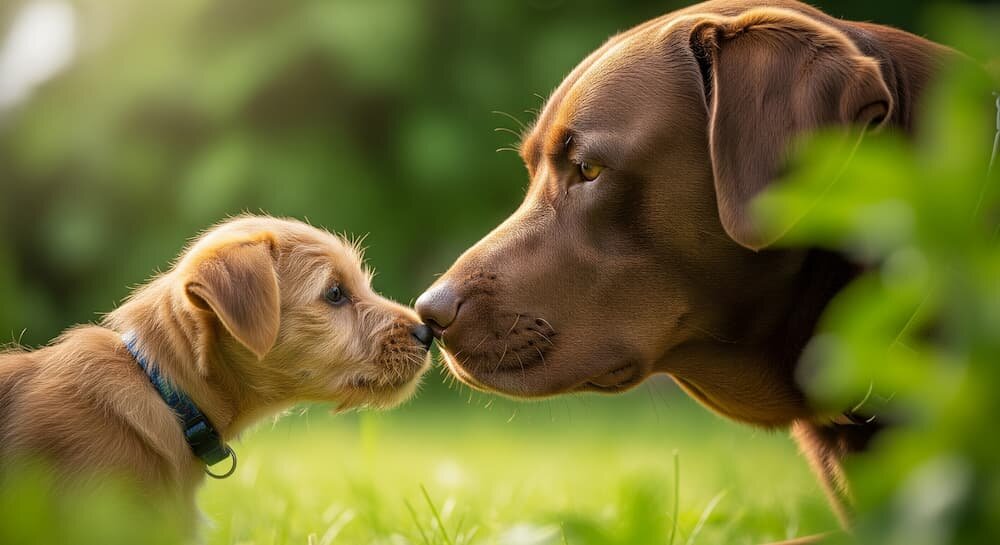Step 1. Allow the new pet to explore alone
When you bring your new dog home, get your helper to take your existing pooch out for a walk. During this time let your new dog explore the home and get familiar with the smells of your house and other dog.
Step 2. Separate them and provide smells
Once your existing dog is back from their walk, have your helper take the new dog to a closed room or outside and give them of your existing dog's toys or blankets to play with. This step is really important as they are learning to associate positive thoughts with the smell.
Step 3. Business as usual
Go about your regular activities with your existing dog; e.g. have a play or cuddle in front of the tv. Stick to your normal routine, don't give them the cold shoulder or smother them with affection.
Step 4. Swap locations to get them used to the smell
Alternate which dog is in the house every 20-30 minutes to help familiarise them with each other's fresh scent and encourage them to play with the other dog's toys.
Step 5. Allow them to meet in a neutral setting
After rotating the dogs a few times, they should be ready to meet. Whenever you can, avoid introducing them at home as most dogs can be territorial; instead choose a neutral setting like the dog park. Decide on a route to the park with your helper and get them to walk ahead of you with one dog as you follow behind with the other. As most dogs love getting their walks, this is another way to associate each other's scent with a positive experience.
Once you arrive at the park, keep both dogs leashed when they first meet for better control. If they are getting over excited, try to distance them and expend some of their extra energy with a game of tug-of-war or lap around the park. When they're ready to play unrestricted, leave their leashes attached in case you need to quickly intervene.
Step 6. Let them interact at home
It's important to remember what a significant adjustment this will be for your existing dog who is used to having your undivided attention. It's only natural to be concerned about your new dog being anxious in their new home but be careful not to skew your attention in their direction.
When we recently introduced a new Border Collie cross into our home, our existing chihuahua, Nacho, (who was usually good natured) developed aggressive tendancies, destructive behaviours and would ignore learnt commands. Without meaning to, we had been giving our new dog special attention. As she has much higher physical needs than our Chihuahua, she would get taken on extra walks while little Nacho was left at home. We also played with him less as he would play with our new dog instead. But with some changes to our routine, we've been able to get little Nacho back to his happy little self.



